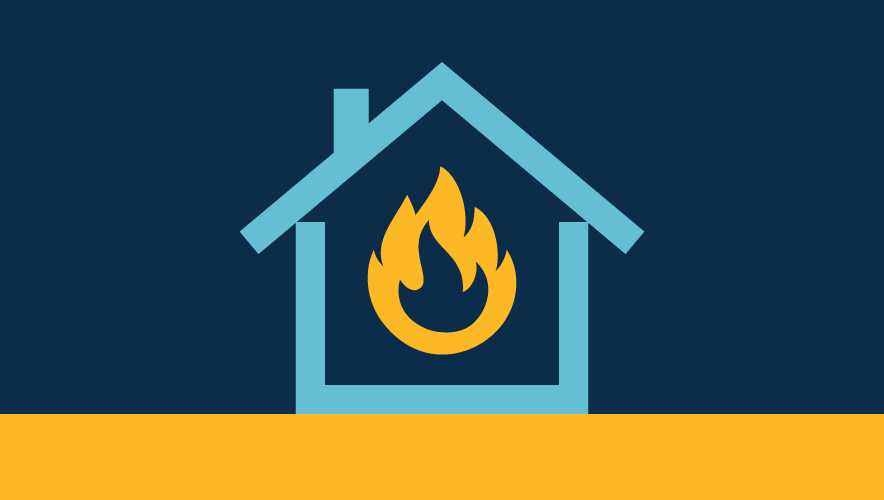How to Protect Your Security Team from Wildfire Smoke Exposure
With more than 400 wildfires burning in Canada, a significant amount of smoke has blown across North America, lingering over cities like Manhattan, Ottawa, and Washington, D.C.
An estimated 100 million Americans are impacted by air quality alerts that range from Code Orange—signaling that the air is unhealthy for sensitive groups—and above, the U.S. Environmental Protection Agency (EPA) told USA Today.
Smoke from the wildfires spread out on 7 June to the Great Lakes and large parts of the eastern regions of both Canada and the United States, reaching as far south as Atlanta, Georgia, and as far west as Chicago, Illinois.
Wildfire smoke swirling around an upper level Low over New England is depicted in the smoke forecast for today. Hazardous air quality levels are forecast for much of the Northeast and Mid-Atlantic, including major metro areas along the I-95 corridor. https://t.co/nCd0zl3kwi pic.twitter.com/kt451APVdd
— UW-Madison CIMSS (@UWCIMSS) June 8, 2023
Officials are recommending that those living and working in heavily impacted areas should remain indoors when possible. Among the 100 cities with the worst air quality on 8 June, New York City was rated the very worst; Toronto, Canada, ranked sixth; and Detroit, Michigan, USA, was ranked in the number 12 spot, according to IQAir, which monitors air quality. Some Canadian cities began to see improving air quality on Thursday, including Montreal, Ottowa, and Toronto, according to CNN.
The unhealthy air quality has resulted in various organizations postponing or cancelling operations, including schools, professional sports, and airlines. Meanwhile, the ongoing fires in Canada—which have already burned an estimated 9.4 million acres—threaten some of the country’s infrastructure.
While some individuals are able to take shelter from the smoke inside, many organizations must remain operational with staff exposed to the elements. When this happens, there are steps leaders can take to keep their employees safe from wildfire smoke. Although the following information is geared toward mitigating the impacts from wildfire smoke, the general steps can also apply toward protecting against other environmental hazards.
Stay Informed
First, use IQAir to check what the local air quality is around your home and workplace. A higher air quality index (AQI) number indicates a greater level of air pollution, and therefore a greater impact on health, according to AirNow (a U.S. government air quality index).
- 0-50 AQI (Code Green): good air quality, no health risks.
- 51-100 AQI (Code Yellow): moderate air quality, although there may be some risks to anyone especially sensitive to air pollution, such as someone with a respiratory ailment.
- 101-150 AQI (Code Orange): the air is unhealthy for sensitive groups, who may experience health effects; most people are less likely to be impacted.
- 151-200 AQI (Code Red): unhealthy air quality, with some members of the general public experiencing health effects.
- 201-300 AQI (Code Purple): air quality is very unhealthy and presents an increased risk of health effects to everyone.
- 301 and Higher AQI (Code Maroon): hazardous. “Health warning of emergency conditions: everyone is more likely to be affected,” as defined by AirNow.
Air quality alerts are issued based on the Air Quality Index (AQI). Do you know what these numbers and their corresponding levels mean? View the chart below to find out. For more information about air quality safety, visit https://t.co/DvoC6VnbGO pic.twitter.com/ch6tDCyQpe
— Erie County Department of Health 😷 (@ECDOH) June 7, 2023
AirNow reports on air quality throughout the United States, and has partnered with the Environmental Protection Agency (EPA) and other environmental and air quality government agencies.
Personal awareness is also key, as people with lung or heart diseases, i.e., asthma, Chronic Obstructive Pulmonary Disease (COPD); children; the elderly; and women who are pregnant are more susceptible to impacts from wildfire smoke.
Stay Inside
Wildfire smoke is made up of a mixture of several pollutants, including gases like carbon monoxide, hazardous air pollutants, water vapor, and particle pollution.
“Particle pollution is a general term for a mixture of solid and liquid droplets suspended in the air,” according to the EPA. “…Particle pollution represents a main component of wildfire smoke and the principal public health threat.”
Studies indicate that wildfire smoke is up to 10 times more harmful to humans than other types of pollution because of PM2.5 particles.
“If you can see the haze outside your window, the sky looks an unusual color or the air smells like campfire, it’s best to stay indoors if possible,” NPR reported.
For areas where the air quality is at Code Orange or greater, be aware of how much time you are spending outdoors and how air quality can impact your health, according to AirNow.
Here's what the various air quality rankings mean:
- Orange: Although it is fine to be outside for shorter activities, if you have to be outside for prolonged periods, take more breaks and do less intense activities. If you or someone else exhibits symptoms of wildfire smoke exposure—difficulty breathing, coughing, wheezing, or chest tightness—take action by doing less intense activity, stopping all activities, or going back inside. If someone suffering from asthma has worsening symptoms, use prescription medicine. If symptoms do not improve, seek medical assistance.
- Red: Necessary outdoor activity should be limited to less intense activity and short durations of time. If possible, move activities indoors or reschedule altogether. Be mindful of respiratory symptoms and take action as necessary.
- Purple: Move all activities indoors or reschedule to another day or time.
Mitigate Exposure
If you or security team members have to be outside and the AQI registers at 150 or above, there are mitigation measures you can take to reduce exposure to wildfire smoke.
Take frequent breaks from outdoor pollution, reduce physical activities that are strenuous, and use a well-fitting respirator or mask, such as an N95 mask or P100 respirator that can help block fine particulates in wildfire smoke.
These tiny and lightweight particles (PM2.5) can travel great distances and can enter the bloodstream and lungs, causing asthma, heart attacks, inflammation, strokes, and other impacts on breathing, according to NPR.
Paper dust masks commonly sold at hardware stores for blocking out sawdust or other large particulates are insufficient in protecting against PM2.5.
The U.S. Centers for Disease Control and Prevention (CDC) recommends that employers and staff should prepare and plan for reducing exposure to smoke from wildfires when necessary.
“Limit the worker’s smoke exposure by making accommodations for that worker to perform his or her duties indoor or in a location that reduces exposure to smoke, if possible,” according to the CDC.
Protect the Great Indoors
If you're taking shelter inside to limit exposure to wildfire smoke, there are additional measures you can take to protect yourself and your workforce.
Close all doors and windows that would lead outdoors. Running a central air conditioning system on a recirculation setting is also a good idea because these units usually have an air filter. Appliances like air purifiers are also helpful in improving indoor air quality.
You should also avoid activities that would contribute to indoor air pollution, such as burning candles, smoking, vacuuming, or using gas stoves or fireplaces.
If you're traveling in a car, remember to use the recirculate function in the vehicle's air conditioning system. This allows the car to recirculate air already in the car instead of pulling in air from the outside environment.
It also helps to stay hydrated. Smoke from wildfires can bring in dry and windy conditions that can quickly dehydrate people.
The same recommendations also apply to any four-legged pets and livestock. Dogs should be kept hydrated, as well as occupied with indoor activities while only going outside for quick bathroom breaks.
For more information on dealing with the impacts of wildfire smoke, in 2019 AirNow published a revised edition of Wildfire Smoke: A Guide for Public Health Officials.
The U.S. Centers for Disease Control and Prevention also provides additional resources for outdoor workers who are exposed to wildfire smoke.
The U.S. Occupational Safety and Health Administration (OSHA) maintains resources on wildfires and their impacts.











